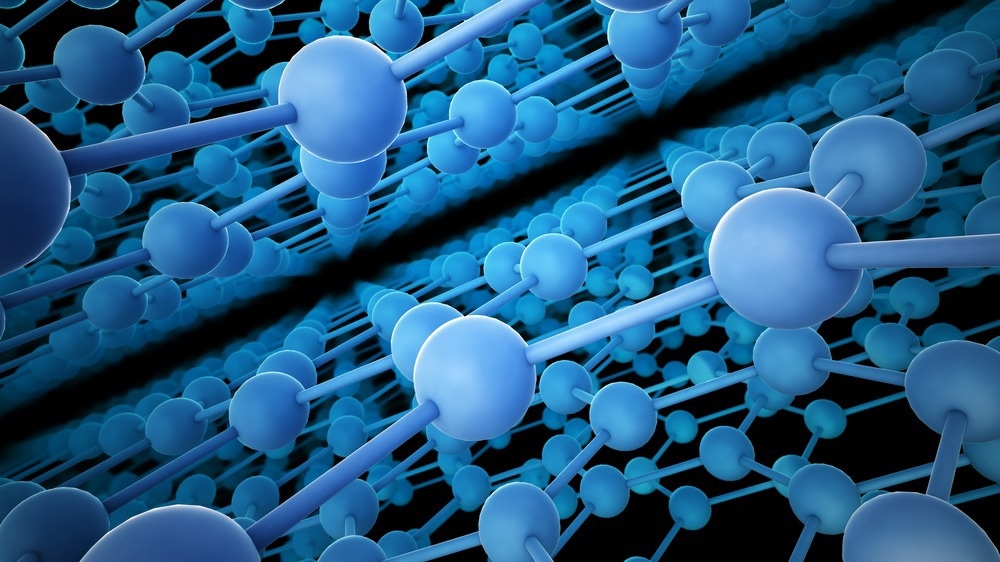Electronic components and circuits shift towards more elastic and flexible platforms. Formulations using innovative nanomaterials have been created to fuel the search for more environmentally friendly, sustainable, and cost-effective conductive inks for coating flexible platforms.

Study: Electrically Conductive 2D Material Coatings for Flexible and Stretchable Electronics: A Comparative Review of Graphenes and MXenes. Image Credit: Mopic/Shutterstock.com
A review paper published in the journal Advanced Functional Materials sheds some light on the significant features of conductive inks and two-dimensional (2D) materials, specifically graphene and MXenes.
Flexible Materials for Electronic Systems
Advances in elastic, wearable and biocompatible electronic technologies depend on the creation and adoption of electronic circuits and optoelectronic systems that are lightweight and inexpensive, consume little power, and can perform in a variety of situations. The mechanical stress endurance of the systems and their constituent materials is also important.
Printed circuit boards (PCBs) are fundamental and omnipresent components of most electronic systems. PCBs provide mechanical support and electrical linkage to electronic circuits by utilizing conducting channels or signal traces.
A PCB is a thin panel constructed of poly-epoxides and glass fiber, covered with fine sheets of copper. However, the rigidity differential between the platforms and the electronic connection renders this method unsuitable for use with elastic and flexible substrates.
The emphasis of recent studies has therefore shifted to the development of conducting inks for coating and decorating electronic circuits on flexible materials that can bend with the platform while staying attached to it, and maintain their electrical characteristics.
Advantages of Using Nonmetallic Inks
While nonmetal inks have a higher electrical resistance than metallic inks, they still offer some important benefits.
A post-coating process is usually needed for applications of conductive inks, which may cause damage to typical flexible polymeric platforms. Nonmetallic inks do not require this process.
The distribution of these inks is usually simpler, allowing the development of a stable conducting ink over time. There are certain cases in which these inks may be biocompatible, allowing for smoother processing and myriad uses.
Nonmetallic inks cost much less than inks containing particles of precious metal like silver (Ag) and gold (Au). The formulation of such inks is usually a relatively straightforward process. Fewer solvents are required for their production, and the solvents used, like alcohol or water, are harmless to humans and the environment.
Conductive Inks Based on 2D Materials
Electrically conductive inks with two-dimensional material formulations have piqued the interest of researchers because of the benefits provided by their flakelike morphology and large aspect ratio.
These inks exhibit great optical transmittance and electric conductance in thin-sheet coverings over transparent, and stretchable polymeric platforms, allowing them to be used in flexible, transparent electronic systems.
These conducting inks demonstrate good adherence to a wide range of foams and fabrics, generating conductive frameworks of nanoplatelet layers that may slide over each other. This phenomenon endows remarkable micromechanical qualities on the conductive frameworks, allowing them to be used for pressure and strain gauging.
Different Kinds of Two-Dimensional Materials
The ever-growing collection of solution-processable two-dimensional materials contains conductive materials like graphene, semiconductive materials like molybdenum disulfide or tungsten disulfide, and insulators like graphene oxide or hexagonal boron nitride.
MXenes are a class of electrically conductive two-dimensional transition metal nitrides/carbides. MXenes can integrate the lower resistivity values of metallic inks with the nanoplatelet shape and ease of processing of two-dimensional inks, making them highly sought-after materials.
Benefits of Flexible Coatings
Elastic, conductive films may either be used directly for applications such as electromagnetic interference shielding or modulated for specific use-cases such as heating or detection.
Additionally, the conductive coatings may be designed to utilize conductive structures for various applications such as interdigitated electrodes (IDEs) in supercapacitors (SCs), or strain gauges.
The employment of asymmetrical and hybridized SC electrodes in coplanar, cofacial, or fibrous configurations has resulted in various flexible supercapacitors and micro-supercapacitors that use MXenes and graphene.
MXenes vs. Graphene
MXenes are becoming increasingly popular because they integrate good electric conduction with crucial processability and morphological benefits.
MXenes share the advantageous qualities of graphene, such as good electric conduction, two-dimensional architecture, and excellent adherence to substrate materials, without being hampered by some of the drawbacks of graphene-based materials.
MXenes do not need chemical or thermal reduction mechanisms that are otherwise necessary for graphene oxide. Additionally, unlike graphene nanoparticles, Mxenes show quick dispersion in aqueous media without the need for any additives.
In Joule heaters, for example, this results in smaller potential demands for attaining the appropriate temperatures than graphene, even rivaling metal nanomaterials. In electromagnetic interference shielding, the increased conductivity of MXenes allows for greater signal attenuation at a thickness similar to graphene.
The tendency of MXenes to undergo oxidation and electrical deterioration, even inside polymeric frameworks, might necessitate more research to design robust surface characteristics and greater lateral sizes.
Reference
Orts, V., Chan, K. C., Caironi, M., Athanassiou, A., Kinloch, I. A., Bissett, M., & Cataldi, P. (2022). Electrically Conductive 2D Material Coatings for Flexible and Stretchable Electronics: A Comparative Review of Graphenes and MXenes. Advanced Functional Materials. Available at: https://onlinelibrary.wiley.com/doi/10.1002/adfm.202204772
Disclaimer: The views expressed here are those of the author expressed in their private capacity and do not necessarily represent the views of AZoM.com Limited T/A AZoNetwork the owner and operator of this website. This disclaimer forms part of the Terms and conditions of use of this website.